Osmorhiza claytonii
A hairy woodland plant with a slight smell of anise and clusters of white flowers
Osmorhiza claytonii hairy sweet cecily
It is easy to pass by this plant assuming it is just a poor example of the aniseroot (O. longistylis). It is, however, a distinct, but similar native perennial species of the carrot family. It is a bit smaller than aniseroot and has smaller flower clusters (4-7 flowers per cluster) a fact that is easily missed by the casual hiker. The flower cluster is flattened (an umbel). The plant also has densely fuzzy stems, compared to the sparse hairs of the aniseroot. This is the easiest way to tell the difference between the two related species. The flowers of the two species are similar, but sweet cicely has 2 short styles that do not extend beyond the petals. Individual flowers are less than 1⁄16 of an inch wide and have 5 petals.
The roots and crushed leaves of both species have the odor of anise or licorice (although aniseroot has a bit of a stronger smell). The leaves of both species are similar - light green and compounded into three leaflets. Each leaflet may also be divided, toothed, or lobed. Both species bloom in late spring in wooded areas. This requires some degree of shade tolerance. The fruit is a dry brown schizocarp up to one inch long. It splits into 2 parts when ripe and is dormant during the winter.
Habitat & Range
Grows in rich woods, wooded stream banks, and wet meadows. Prefers rich, moist, well-drained soils and part shade to full shade.
Present throughout the state.
| EMP: | FACU |
|---|---|
| NCNE: | FACU |
Phenology
Flowers May & June. Blooming lasts for 2 to 3 weeks.
Characteristics
Inflorescence compound umbels composed of 3 to 5 umbellets; 4 to 8 flowers per umbellete; involucre of several sharp, hairy bracts of ¼-¾” in length around each inflorescens and also a set of bractlets around each umbellete
Flowers white to greenish-white; 5 notched petals, 5 white-tipped stamens, 2 short (shorter than petals) styles per flower, 0.7 - 1.5 mm long; may have slight anise odor
Leaves bi- or tripinnately compound; basal leaves on long stalks that sheath the stem; lower stem leaves start out on long stalks with stalks reducing up the stem progressively
leaflets coarsely toothed, lobed; 2-3″ long & abt 2″ wide; sparsely to moderately hairy; oval-ovate to lanceolate
Stem single, densely hairy
Fruit linear to clavate flattened brown schizocarp; 15-22 mm long; contains 2 segments each with 1 seed, fruit splits in 2 when ripe
Height 1 to 3 feet
Plant Codes
S-rank: S5 (Secure)
G-rank: G5 (Secure)
Ecology
Bees, flies and beetles visit the flowers helping with pollination. Deer and rabbits browser the leaves, although it is not a significant food source for them. The hooked fruits attach to animal fur or bird feathers helping with seed dispersal.
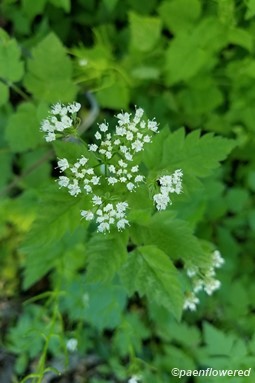
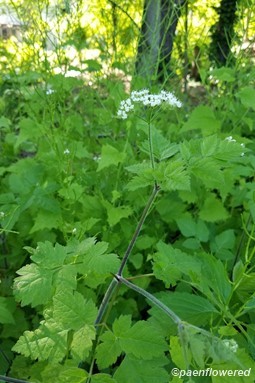

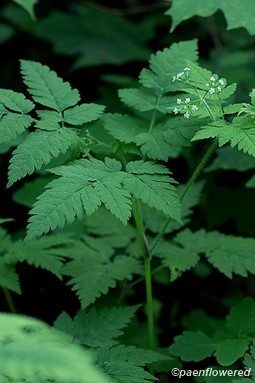
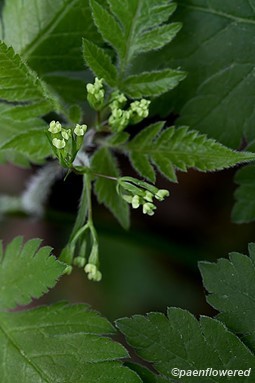


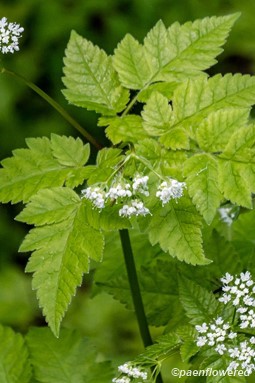


Comments
Have you spotted this plant in your area? We'd love to hear about your experience! Share your comments or questions about the plant below. Comments are moderated before posting.